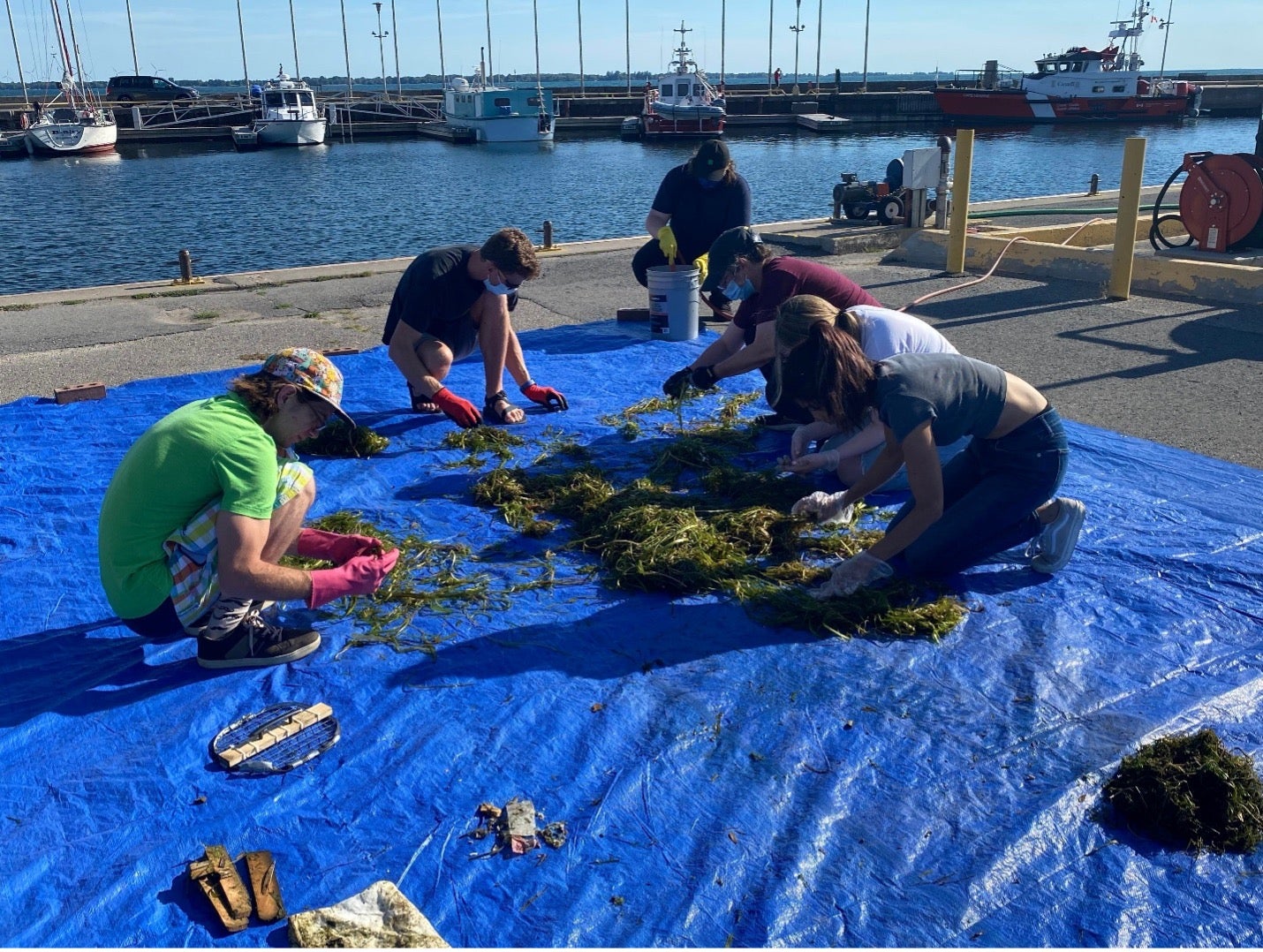
Pollution Probe volunteers sorting plastic debris Credit: Great Lakes Plastic Cleanup
By Una Hogan, Department of Chemistry, University of Waterloo
In a world that is more connected now than ever before, we not only have the opportunity, but the responsibility, to work with others towards our common goals. For the Microplastics Fingerprinting Project, our goal is to better understand the sources, quantities, compositions, and fate of microplastics in the environment, as well as its environmental impacts. Our project brings together researchers from a wide variety of disciplinary backgrounds, including biology, chemistry, mechanical and civil engineering, and economics. We are also working closely with a number of collaborating partners to broaden our knowledge and spur the research forward in a way that responds to the questions being asked by water practitioners.
As a PhD candidate, working as a team member in the project, I have been fortunate to collaborate with researchers from many disciplines, as well as organizations such as Pollution Probe, a national, environmental not-for-profit and registered Canadian charity. Since their founding in 1969, Pollution Probe has been involved in finding substantive and enduring solutions to pressing environmental issues. Together with the Council of the Great Lakes Region, they lead the Great Lakes Plastic Cleanup initiative, which aims to remove plastic from the Great Lakes.
The Great Lakes Plastic Cleanup uses litter cleanup technology to collect plastic from waterways. This plastic is then sorted and analyzed, and valuable and recyclable plastics are recovered and reused. They are currently using technologies such as ‘The Seabin’, which is a floating bin that collects plastics that are found on the surface of the water, and ‘The LittaTrapTM, which is a trap that fits inside stormwater drains to collect plastic trash before it enters waterways. Since its foundation, the project has removed over 15kg and 74,000 pieces of plastic debris from the Great Lakes and surrounding waterways.
We collaborated with Pollution Probe and the Great Lakes Plastic Cleanup to acquire some of the environmental plastic debris that they have collected. This plastic, which otherwise would have been difficult to obtain, will be instrumental to my research. I’m excited to begin my analysis and find out what insights I can gain from this material. For instance, by analyzing the chemical composition of these plastics, it is possible to determine if they contain specific additives and colourings which may provide clues about what the plastic was used for before it was discarded into the environment. Watch out for updates on what I learn in the coming months!
It is my hope that through collaborations such as this one, we will learn more about microplastics that would have otherwise been too resource intensive to obtain on our own. If your organization has access to plastic samples that can be shared with our research team, please contact Nancy Goucher.